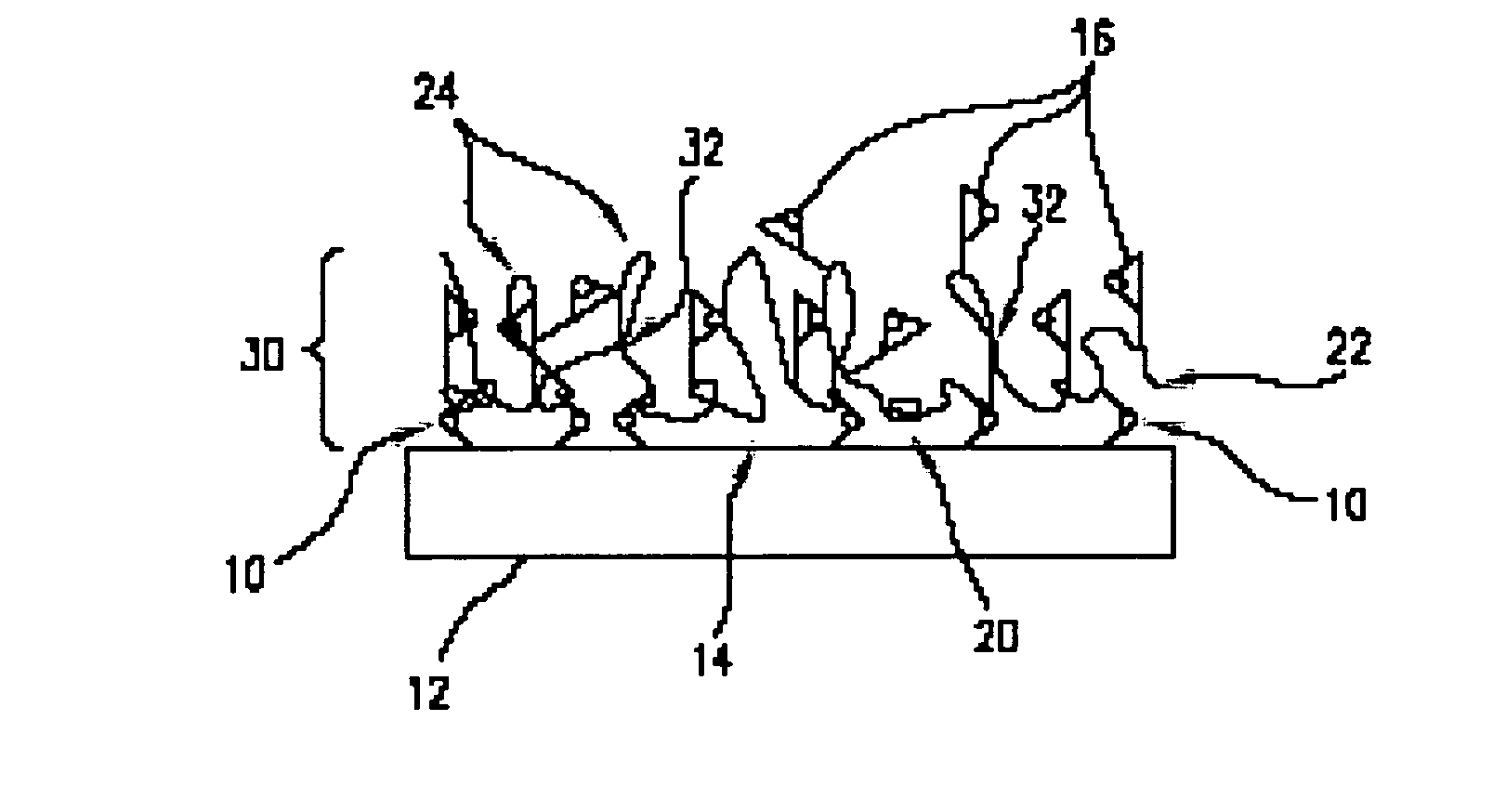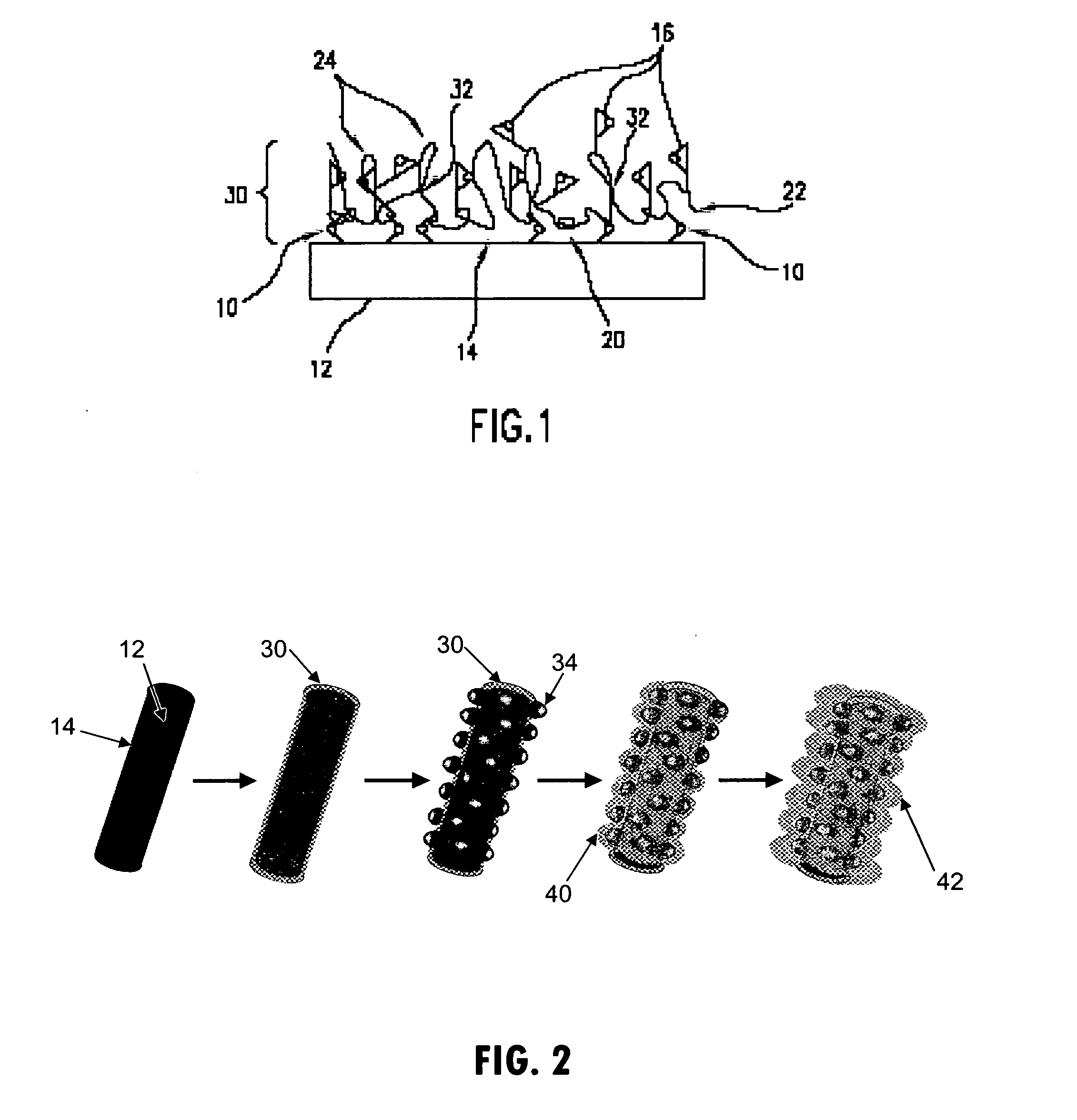Ultrahydrophobic substrates
a technology of hydrophobic substrates and substrates, applied in the field of ultrahydrophobic substrates, can solve the problems of expensive and complicated processing techniques, limited methods, etc., and achieve the effects of increasing the hydrophobicity of the surface, and increasing the surface roughness
- Summary
- Abstract
- Description
- Claims
- Application Information
AI Technical Summary
Benefits of technology
Problems solved by technology
Method used
Image
Examples
example 1
[0066] A 70 / 30 by weight PG MA / PVP (epoxidized poly(glycidyl methacrylate) / poly(2-vinylpyridine)) solution from MEK (0.2 wt %) was formed and applied to a silicon wafer. The modified substrate was cured at 110° C. for 10 minutes to aid self cross-linking of the epoxy groups of PGMA. An SPM topography image of a 1 μm×1 μm area of the silicon substrate coated with the 70 / 30 PGMA / PVP blend is in shown in FIG. 3A.
[0067] Coated substrates were then exposed to a suspension of silver nanoparticles (110 nm-130 nm in diameter) that had been held in deionized water at low ionic strength overnight in order to maintain substantial long-range electrostatic repulsion between particles and consequently minimize clustering of the nanoparticles on the surface of the substrates.
[0068] Following adsorption of the nanoparticles to the surface, a further layer of PGMA was applied via dip coating. This layer was cured in the same manner as the first layer. This sandwich layer coating was found to be qu...
example 2
[0071] A polyester fabric was modified according to a process as described above for the silicon wafer of Example 1, except that the polyester fabric was first subjected to plasma discharge in the low intensity mode for 10 minutes in order to activate the surface of the fibers forming the fabric. Following activation, a PVP / PGMA layer, silver nanoparticles, a PGMA layer, and a PS layer were applied to the fabric, as described above. As a control, a second fabric was modified with only the polystyrene layer, and no nanoparticles were applied to the surface. Static contact angle analysis was performed on both fabrics, and results are shown in FIG. 4. The contact angle of the fabric was obtained as 113°±3.6 for the control surface (FIG. 4A) and 157°±3 for PS / nanoparticle multilayer system (FIG. 4B). Increase in the contact angle was believed to be due to the limited contact of water with the PS layer in combination with the effect of the entrapped air between the coated surface and the...
PUM
| Property | Measurement | Unit |
|---|---|---|
| distance | aaaaa | aaaaa |
| water receding angle | aaaaa | aaaaa |
| size | aaaaa | aaaaa |
Abstract
Description
Claims
Application Information
 Login to View More
Login to View More - R&D
- Intellectual Property
- Life Sciences
- Materials
- Tech Scout
- Unparalleled Data Quality
- Higher Quality Content
- 60% Fewer Hallucinations
Browse by: Latest US Patents, China's latest patents, Technical Efficacy Thesaurus, Application Domain, Technology Topic, Popular Technical Reports.
© 2025 PatSnap. All rights reserved.Legal|Privacy policy|Modern Slavery Act Transparency Statement|Sitemap|About US| Contact US: help@patsnap.com



